#Role of Annotations _ I've never considered 'Why' when using @Controller, @Service, @Repository ….
 Byung Joo Jeong
Byung Joo Jeong#While Enrolling Spring Bean, How Does Annotation Work
#Foreword
I've been using this annotation on each class, but I've never considered "Why". So, I want to know How Does Annotation Works. Before we begin, we should define class, object, fields, methods or anything related to Java Bean(Java Object), In order to understand spring bean, I think we need to define those concepts first precisely. Shortly, I can define them like below.
(I tried to desribe this with my words)
A.Class - Blueprint / template
: Class is a blueprint or template which have method and fields, Class is a type of object.
B.Object - instances created by 'new'
: Object is the instances of that class by using "create with 'new' keyword".
C.methods - behavior of objects
: Method is functions defined within a class that represent the behavior of objects
D.fields(member variables) - state of objects
: Fields(member variables) can be described data members of a class that represent the state of objects
#We have two options to enroll class as spring bean
@Component
: When we use specific annotation like @Controller, @Service, @Repository, we can see @Component annotation, by using it, we can enroll class as Spring bean.
@Configuration + @Bean
: We create class to enroll class as spring bean with @Configuration + @Bean
To specify the conclusion first, What's important is @Component.
#@Controller, @RestController, @Service, @Repository
: When we click annotation with ctrl + left click, we can see the statement for each annotation.
@Controller - Used for handling web request
@Controller
public class ProductController {
}
@RestController // this is @Controller + @ResponseBody
public class ProductController {
}
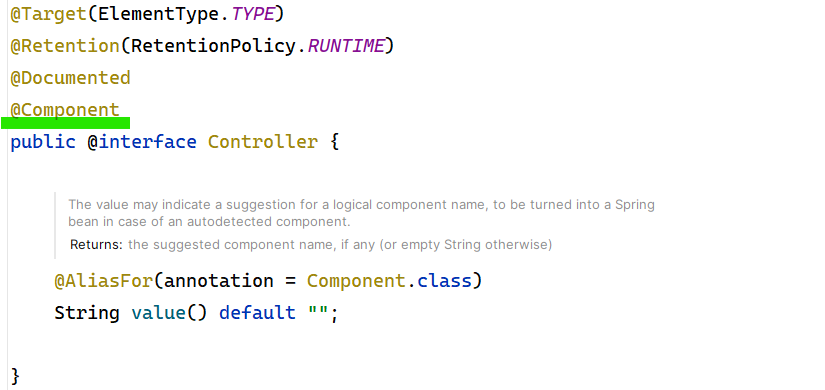
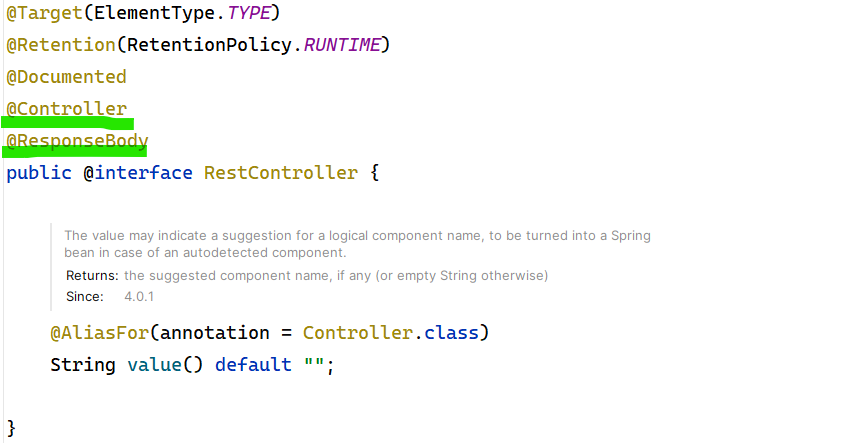
: @Controller has @Component, @RestController = @Controller + @ResponseBody
@Service - Used for holding business logic
@Service
public class ProductService {
}
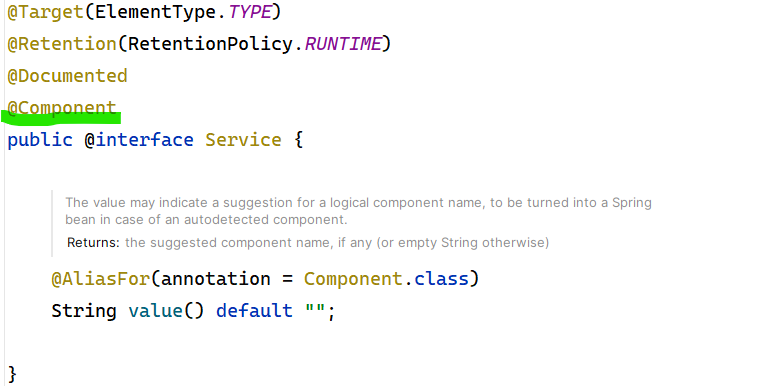
@Repository - Interacts with database that is responsible for data access
@Repository
public class ProductRepository {
}
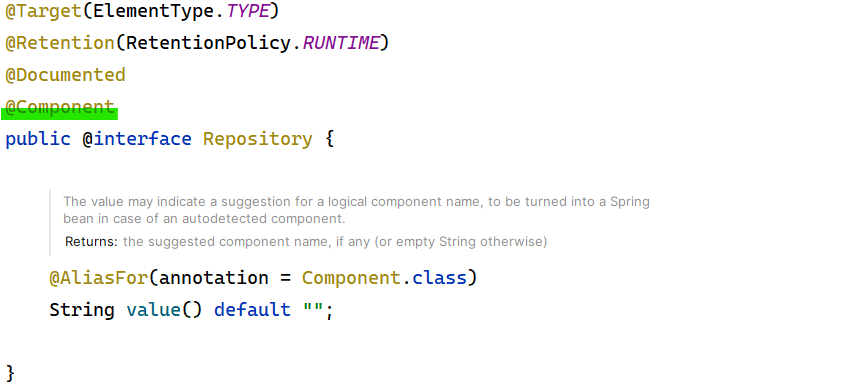
#@Configuration + @Bean
: @Configuration also have "@Component"
@Configuration
public class ApplicationConfig {
@Bean
public ProductService productService() {
return new ProductService();
}
}
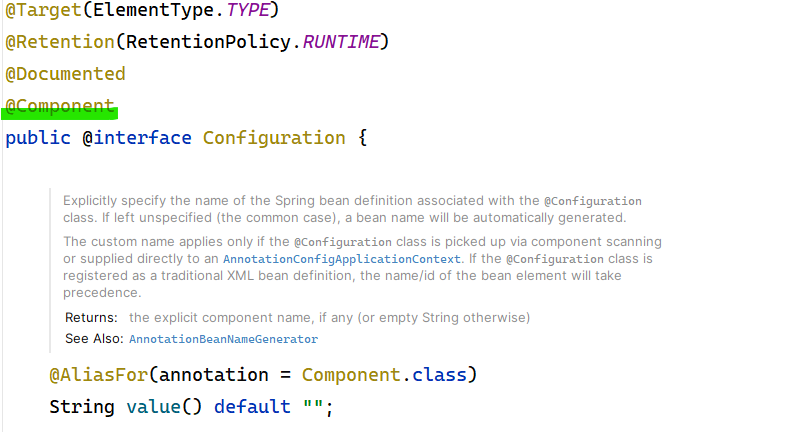
@Bean have no @Component annotation, it's used with @Configuration
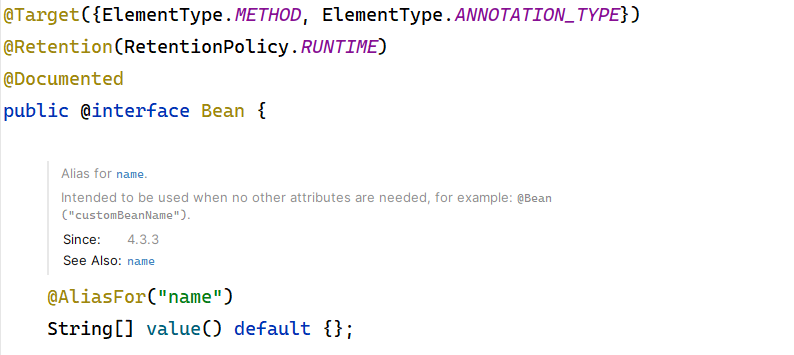
#Automated Way(automatic) vs Hand-Operated Way(manual) @Component vs @Configuration+@Bean
: Is there specific reason why people prefer @Component over @Configuration + @Bean..............................?
#Automated > Hand-Operated
To specify the conclusion in advance, simply put, it's to prevent human error.
For Convenience
: When we use @Configuration + @Bean, Developer needs to create another class for configuration, requiring more effort, which expands the maintenance scope.
To Prevent Typos
: while configuring @Configuration + @Bean, we are more likely to make typos. By using the automated way(@Component - @Controller, @Service, @Repository), We can prevent such errors.(making typos)
In Conclusion, By using specific annotaitons that are automated (@Controller, @Service, @Repository), we can prevent making human errors and reduce the maintenance scope.
Subscribe to my newsletter
Read articles from Byung Joo Jeong directly inside your inbox. Subscribe to the newsletter, and don't miss out.
Written by
